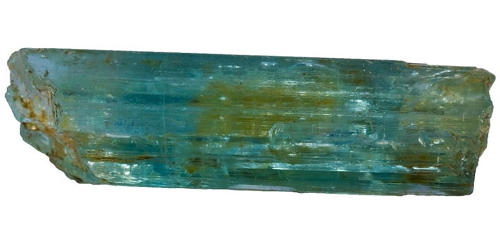Fayalite (Fe2SiO4), also called iron chrysolite, is the iron-rich end-member of the olivine solid-solution series. It is a black or brown mineral which is an iron-rich form of olivine and occurs in many igneous rocks. The name fayalite is derived from Faial (Fayal) Island in the Azores where it was first described in 1840.
Fayalite is named after its discovery locality, on Fayal Island, Azores; although believed to occur in the local lavas. It forms solid solution series with the magnesium olivine endmember forsterite (Mg2SiO4) and also with the manganese-rich olivine endmember tephroite (Mg2SiO4).
General Information
- Category: Nesosilicate
- Formula: Fe2SiO4
- Crystal system: Orthorhombic
- Crystal class: Dipyramidal (mmm)

Properties
Fayalite is found in ultramafic igneous rocks. Mafic is a word that is used to define igneous rocks with a high iron and magnesium content. It is also found in many iron-nickel meteorites, not just as small grains but as large crystals sometimes occupying over 50% of the meteorite’s volume.
- Formula mass: 203.771
- Color: Greenish yellow, yellow-brown, brown; pale yellow to amber in thin section
- Crystal habit: Commonly granular, compact, or massive
- Fracture: Conchoidal
- Mohs scale hardness: 6.5 – 7.0
- Luster: Vitreous to resinous on fractures
- Streak: White
- Diaphaneity: Transparent
- Specific gravity: 4.392
- Optical properties: Biaxial (-)
Occurrence
Fayalite is iron-bearing olivine mineral. Iron-rich olivine is a relatively common constituent of acidic and alkaline igneous rocks such as volcanic obsidians, rhyolites, trachytes and phonolites and plutonic quartz syenites where it is associated with amphiboles. Its main occurrence is in ultramafic volcanic and plutonic rocks and less commonly in felsic plutonic rocks and rarely in granite pegmatite. It also occurs in lithophysae in obsidian. It also occurs in medium-grade thermally metamorphosed iron-rich sediments and in impure carbonate rocks.
Association: Augite, plagioclase, microcline, quartz, apatite, magnetite, ilmenite, spinel, hedenbergite, arfvedsonite, amphiboles, almandine, tridymite, grunerite.
Information Source:
















